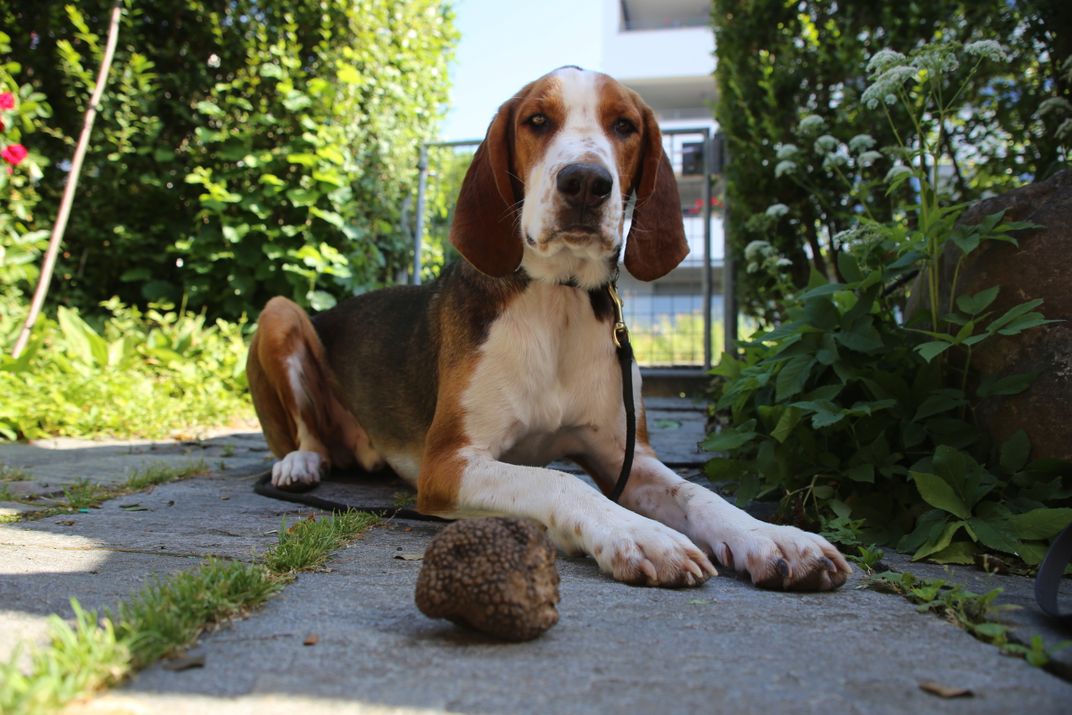Good News, Foodies: Truffles Are Not Stuffed With Chernobyl Radiation
Unlike some mushrooms in Europe, truffles do not seem to be accumulating radiation leftover from the infamous nuclear disaster
/https://tf-cmsv2-smithsonianmag-media.s3.amazonaws.com/filer/cc/6e/cc6e1f33-6d73-43ef-ba33-7814bf7075ee/109525.jpg)
Truffles, those aromatic kings of the fungi realm, are no longer a niche food reserved only for wealthy gourmands. The best specimens can still fetch astronomical prices, but the past decade has seen truffles and their products—oils, butters, salts and more—proliferate in restaurants and grocery stores alike.
So fans of truffle fries and truffle popcorn will no doubt be relieved to hear that their favorite fungi lack one particular ingredient found in their mushroom neighbors: 30-year-old radiation from the Chernobyl nuclear disaster.
Although the infamous incident happened in Ukraine back in 1986, its contamination spread over hundreds of square miles across Europe, placing varying levels of radioactive material in international soil.
“We know that other fungi are still accumulating significant levels of cesium in different parts of Europe,” says Ulf Büntgen, head of dendroecology at the Swiss Federal Research Institute WSL. “The concentration of radioactivity in these fungi is so high that the meat from wild boar, which eat the fungi, is a risk factor for humans.”
Despite the growing popularity and economic prowess of truffles, scientists know very little about the ecology of these subterranean fungi, including the conditions that allow them to grow, the details of their life cycle and the chances that these foodie favorites would be laced with Chernobyl residue.
Büntgen and a team of Swiss, Czech and German researchers recently performed the largest survey of European truffles to date. They found those delectable fungi contain only negligible traces of radiocesium-137, a radioactive isotope commonly formed in nuclear fission. As Büntgen says: “We didn’t have a single outlier, so the results seem robust.”
The researchers focused on Burgundy truffles (aka summer truffles), one of three main species of economic value. While white and black truffles only grow in limited corners of Italy and the Mediterranean, Burgundies have a relatively wide geographic distribution, occurring throughout many parts of Europe that were affected by the nuclear fallout.
Collecting specimens proved challenging, however. Once truffle farmers, hunters and cultivators heard more details about the scientists’ project, most declined to be involved. “When you say, ‘We want to measure whether there is radioactive contamination in your truffles,’ you don’t really get a positive reply,” Büntgen says.
The researchers took to the forest in search of their own samples, truffle-sniffing dogs in tow. In the end they managed to assemble 82 specimens from across Switzerland and Germany, along with a few from France, Italy and Hungary. Many of the truffles they collected personally, while others came from more open-minded collaborators. Back in the lab, they used a gamma-ray spectrometer to measure cesium levels in each sample.

They found that all of the truffles contained insignificant levels of radioactivity, in the range of less than 2 becquerels of cesium-137 per kilogram. In the European Union, 600 becquerels per kilogram is the maximum permitted level for most food products. As the researchers report today in the journal Biogeosciences, this finding “suggests an all-clear” for Burgundy truffle connoisseurs.
“The problem of radioactive contamination of different species of mushrooms is a well recognized subject, and this paper brings new data for the truffles,” says Jerzy Mietelski, head of the nuclear physical chemistry department at the Polish Academy of Sciences, who was not involved in the research. Like other types of fungi, he says, the truffles’ radiation levels may be influenced by the depth at which they develop, as well as by whether they have symbiotic relationships with other species.
For now, though, this remains a hypothesis. As Büntgen says, the key to excluding radiation may have something to do with the truffles themselves, or it might come from something in the environment, such as the soil.
Truffles are known to grow only in calcium-rich soils with a high pH. According to John Dighton, an ecologist at Rutgers, the State University of New Jersey, truffles’ occurrence in such calcareous soils “is a valid argument for lower cesium incorporation,” because the soil chemistry gives it the potential to immobilize cesium. A comparison of contamination levels found in other types of fungi collected at the same sites as the truffles would help clarify whether soil is indeed playing a role, he says.
The team is hoping to expand on their truffle pilot project to include truffles from many more locations throughout Europe, and also to cross-check those fungi with soil samples taken from the same places.
“Truffles really exist in a hidden world,” Büntgen says. “But if you spend enough effort on this topic, you could untangle it.”
/https://tf-cmsv2-smithsonianmag-media.s3.amazonaws.com/accounts/headshot/Rachel-Nuwer-240.jpg)
/https://tf-cmsv2-smithsonianmag-media.s3.amazonaws.com/accounts/headshot/Rachel-Nuwer-240.jpg)